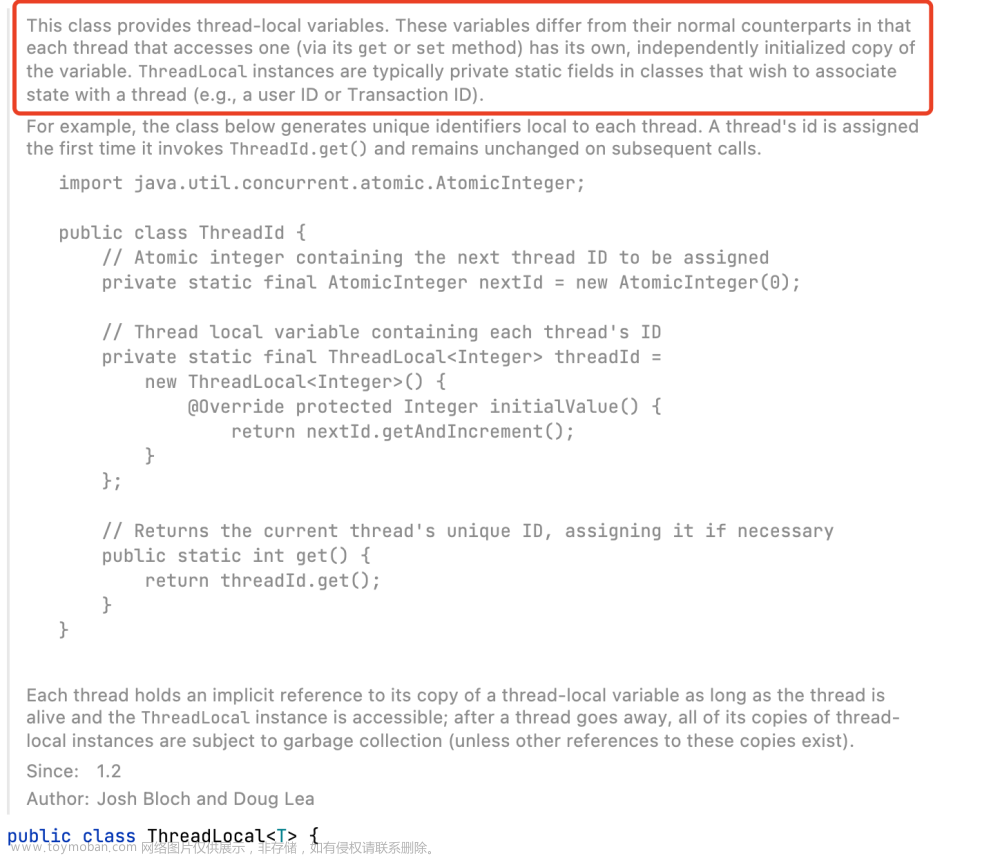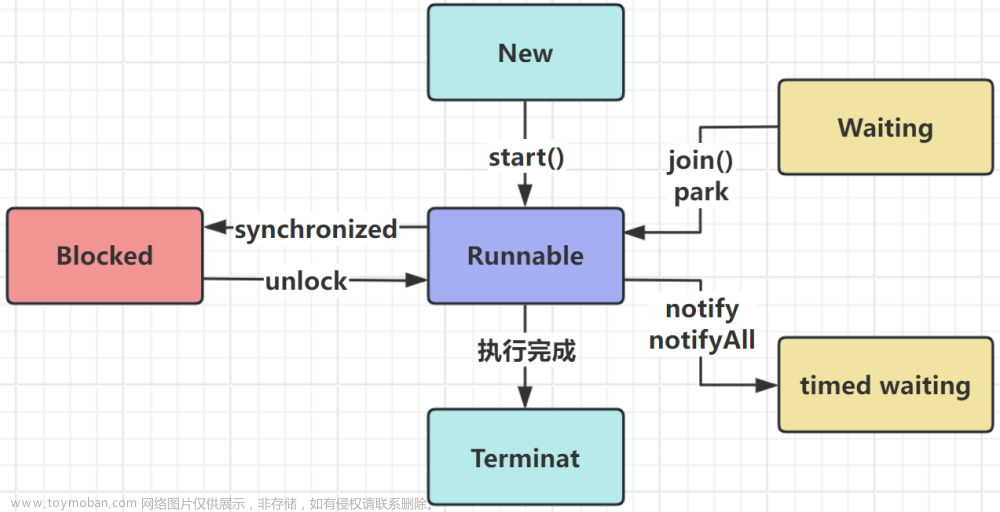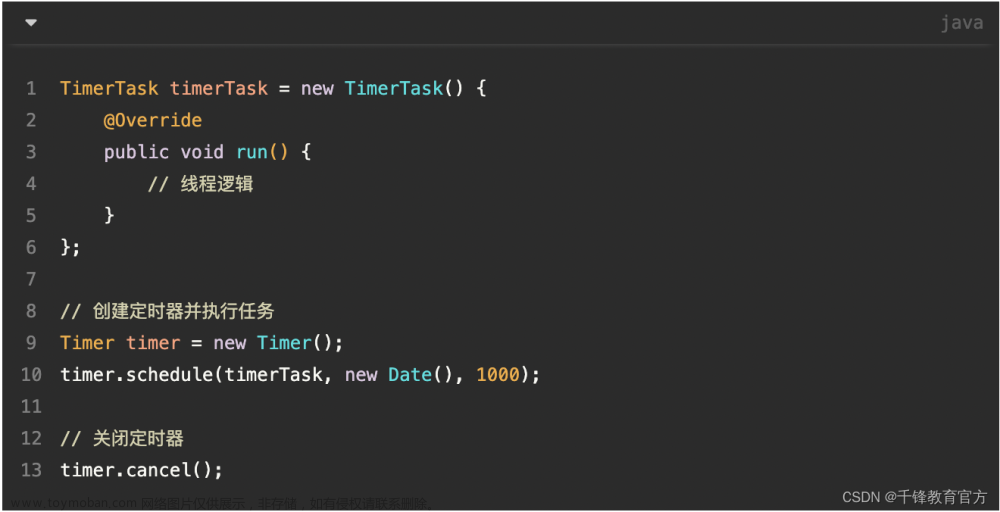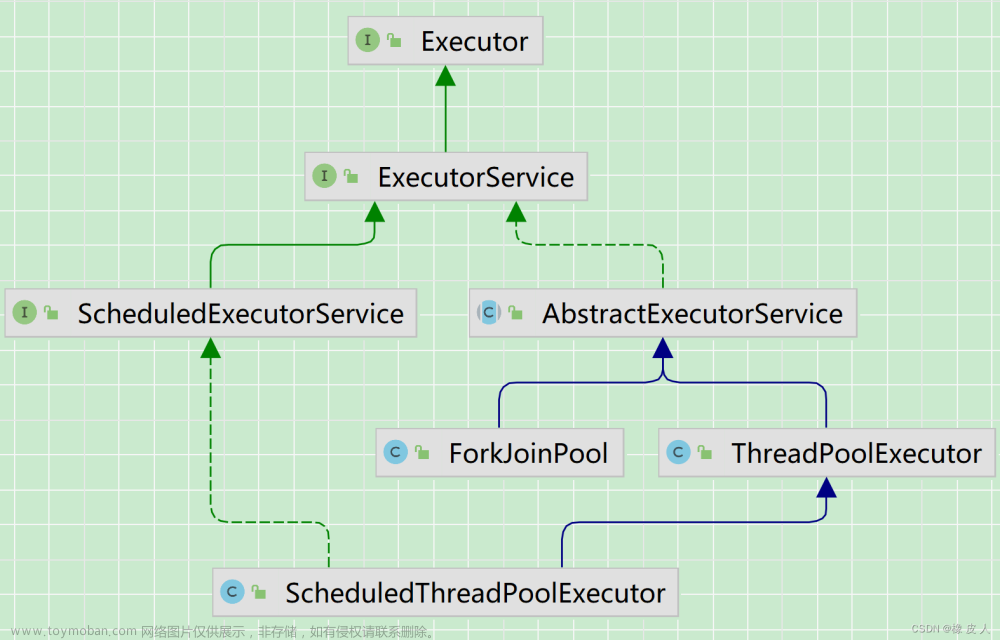一、线程异步
1.创建一个异步线程
public class AsyncThread extends Thread{
@Override
public void run() {
System.out.println("当前线程名称:" + this.getName() + ", 执行线程名称:" + Thread.currentThread().getName() + "我是异步线程");
}
}2.创建主线程,在主线程中创建异步线程执行异步线程,实现异步编程
public static void main(String[] args) {
// 模拟业务流程
// .......
// 创建异步线程
AsyncThread asyncThread = new AsyncThread();
// 启动异步线程
asyncThread.start();
}3.优化:由于线程的频繁创建和销毁浪费系统资源,我们可以使用线程池进行优化
线程池的使用:创建一个类,将线程池设置为全局变量
puclic class Executor {
private ExecutorService executor = Executors.newCachedThreadPool() ;
public void runThread() throws Exception {
executor.submit(new Runnable(){
@override
public void run() {
try {
//要执行的业务代码,我们这里没有写方法,可以让线程休息几秒进行测试
Thread.sleep(10000);
System.out.print("睡够啦~");
}catch(Exception e) {
throw new RuntimeException("报错啦!!");
}
}
});
}
}执行线程时只需要创建执行对象调用执行方法就可以了
二、Future异步
Future异步性能较差不建议使用,由于Future异步获取线程结果会阻塞线程,所以性能较差,不建议使用
三、CompletableFuture异步
JDK1.8 中,Java 提供了 CompletableFuture 类,它是基于异步函数式编程。相对阻塞式等待返回结果,CompletableFuture 可以通过回调的方式来处理计算结果,实现了异步非阻塞,性能更优。
CompletableFuture 实现了 Future 和 CompletionStage 接口, 并提供了多种实现异步编程的方法,如supplyAsync, runAsync以及thenApplyAsync。
下面我们使用CompletableFuture来实现上面的例子:
CompletableFuture<Long> completableFuture = CompletableFuture.supplyAsync(() -> factorial(number));
while (!completableFuture.isDone()) {
System.out.println("CompletableFuture is not finished yet...");
}
long result = completableFuture.get();我们不需要显式使用 ExecutorService,CompletableFuture 内部使用了 ForkJoinPool 来处理异步任务,这使得我们的代码变的更简洁。
四、SpringBoot @Async异步
在@Async注解之前,使用多线程需要使用JDK的原生方法,非常麻烦,当有了@Async之后就比较简单了。
首先,启动类添加@EnableAsync 注解,允许异步:
@SpringBootApplication
@EnableAsync
public class StartApplication {
public static void main(String[] args) {
SpringApplication.run(StartApplication.class, args);
}
}定义线程池
@Configuration
@Slf4j
public class ThreadPoolConfiguration {
@Bean(name = "defaultThreadPoolExecutor", destroyMethod = "shutdown")
public ThreadPoolExecutor systemCheckPoolExecutorService() {
return new ThreadPoolExecutor(3, 10, 60, TimeUnit.SECONDS,
new LinkedBlockingQueue<Runnable>(10000),
new ThreadFactoryBuilder().setNameFormat("default-executor-%d").build(),
(r, executor) -> log.error("system pool is full! "));
}
}
在异步处理的方法上添加注解 @Async ,当对 execute 方法 调用时,通过自定义的线程池 defaultThreadPoolExecutor 异步化执行 execute 方法
@Service
public class AsyncServiceImpl implements AsyncService {
@Async("defaultThreadPoolExecutor")
public Boolean execute(Integer num) {
System.out.println("线程:" + Thread.currentThread().getName() + " , 任务:" + num);
return true;
}
}用 @Async 注解标记的方法,称为异步方法。在spring boot应用中使用 @Async 很简单:
调用异步方法类上或者启动类加上注解 @EnableAsync
在需要被异步调用的方法外加上 @Async
所使用的 @Async 注解方法的类对象应该是Spring容器管理的bean对象;
五、Guava异步
不知道咋用文章来源:https://www.toymoban.com/news/detail-632751.html
文章来源地址https://www.toymoban.com/news/detail-632751.html
到了这里,关于Java 的异步编程 (5 种异步实现方式详解)的文章就介绍完了。如果您还想了解更多内容,请在右上角搜索TOY模板网以前的文章或继续浏览下面的相关文章,希望大家以后多多支持TOY模板网!












